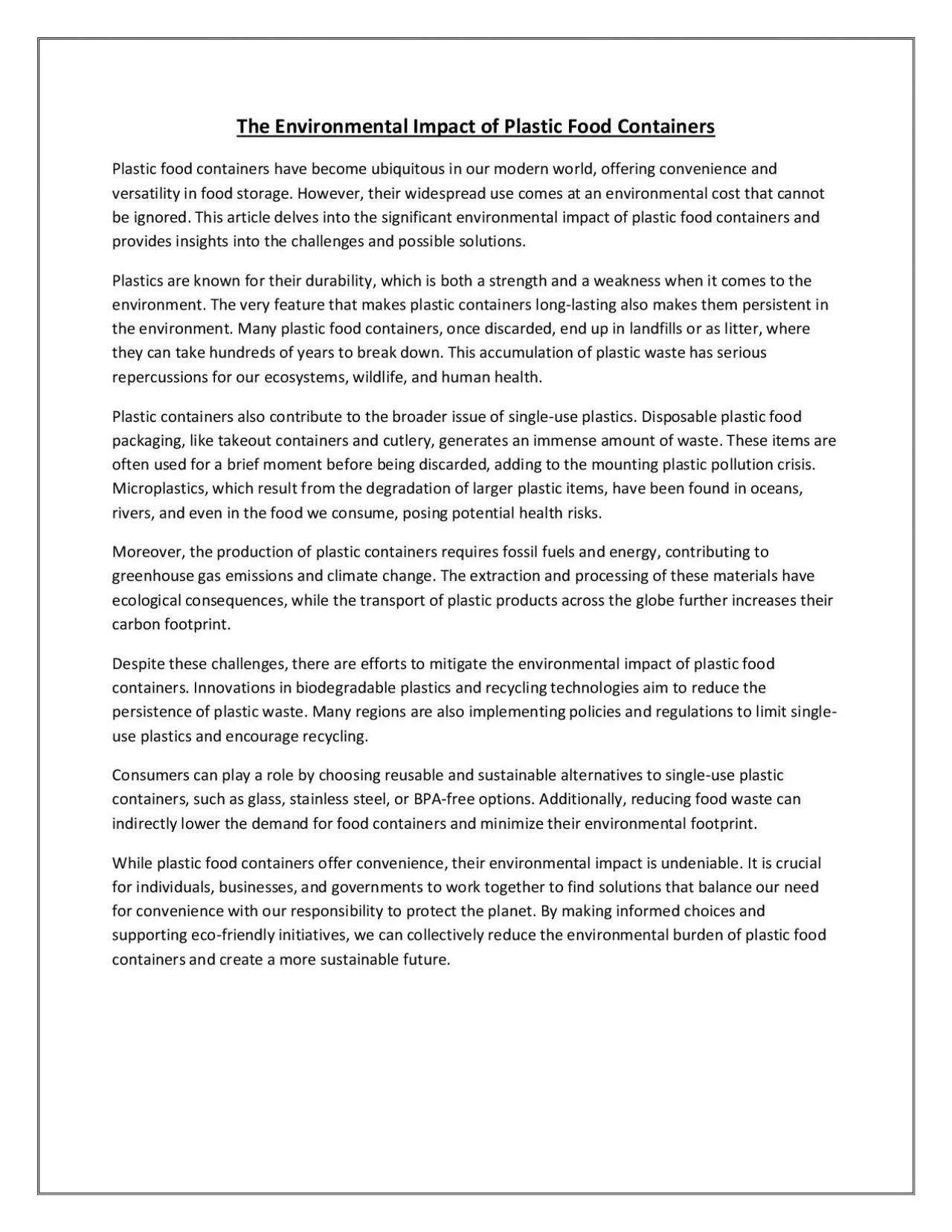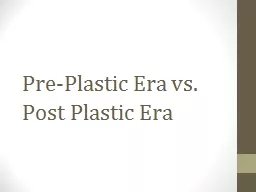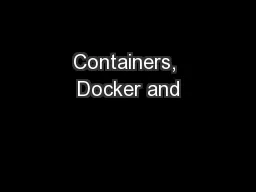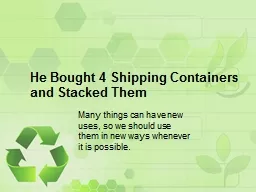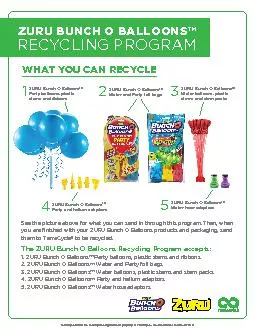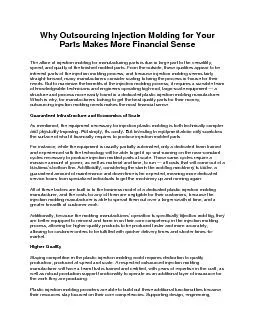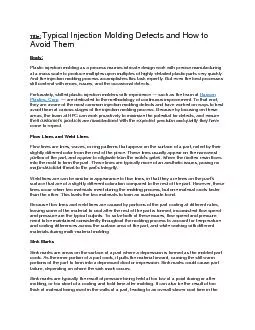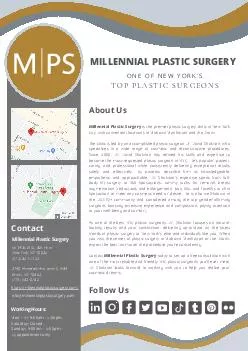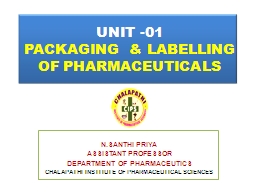PDF-The Environmental Impact of Plastic Food Containers
Author : medtra | Published Date : 2023-11-07
Plastics are known for their durability which is both a strength and a weakness when it comes to the environment The very feature that makes plastic containers longlasting
Presentation Embed Code
Download Presentation
Download Presentation The PPT/PDF document "The Environmental Impact of Plastic Food..." is the property of its rightful owner. Permission is granted to download and print the materials on this website for personal, non-commercial use only, and to display it on your personal computer provided you do not modify the materials and that you retain all copyright notices contained in the materials. By downloading content from our website, you accept the terms of this agreement.
The Environmental Impact of Plastic Food Containers: Transcript
Download Rules Of Document
"The Environmental Impact of Plastic Food Containers"The content belongs to its owner. You may download and print it for personal use, without modification, and keep all copyright notices. By downloading, you agree to these terms.
Related Documents

